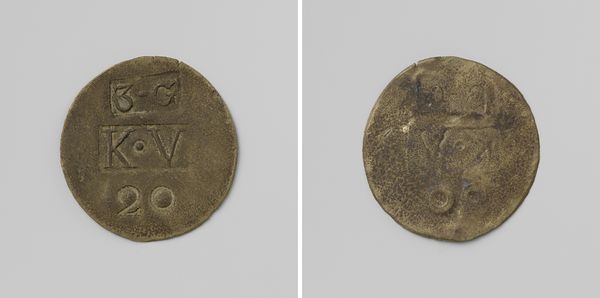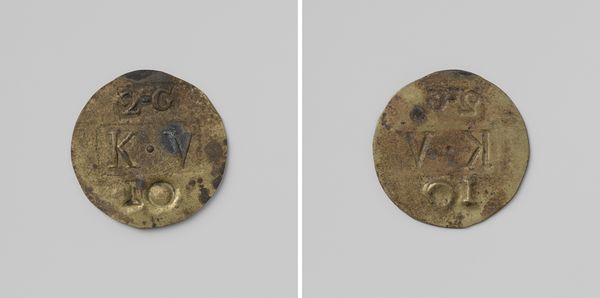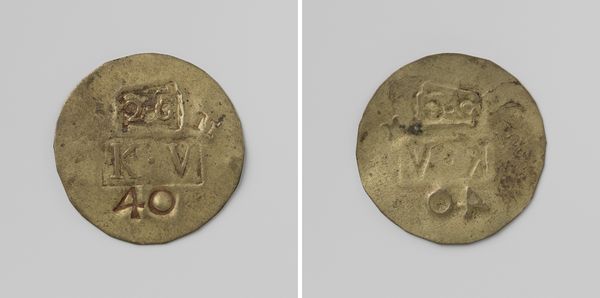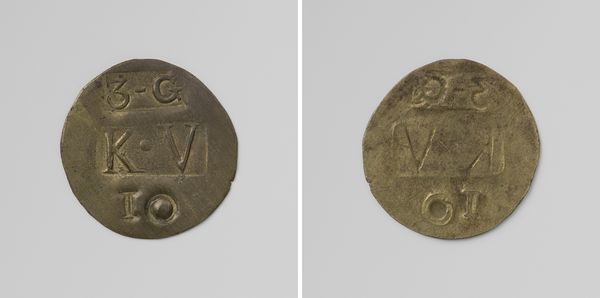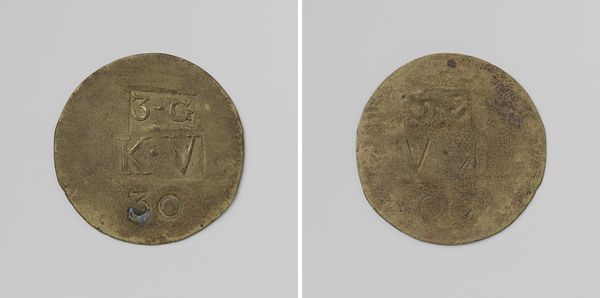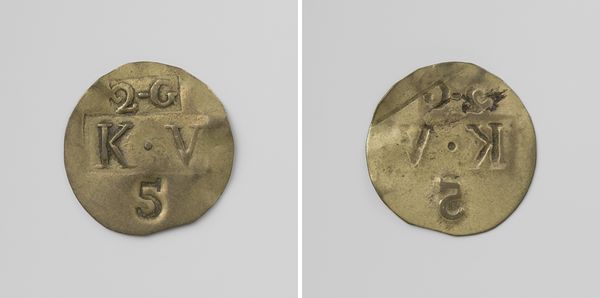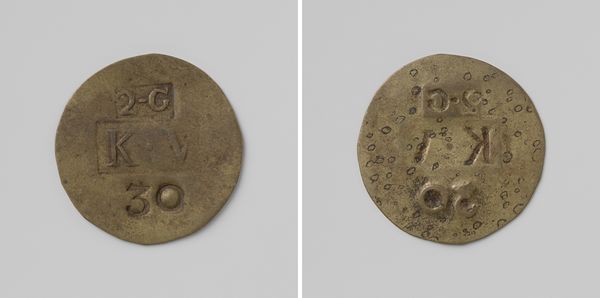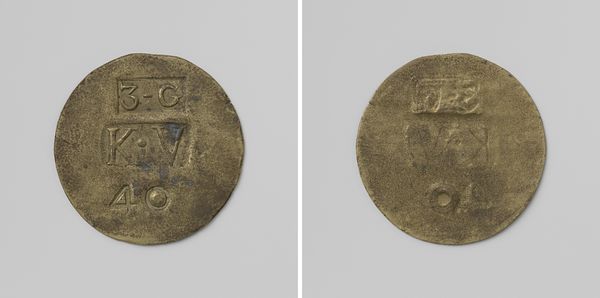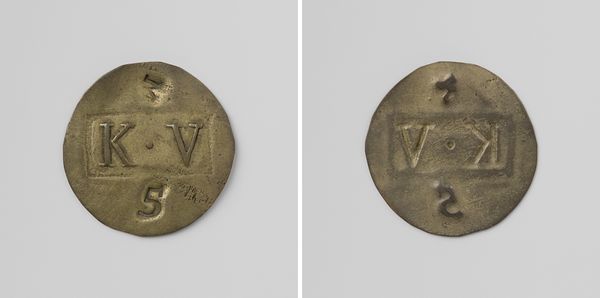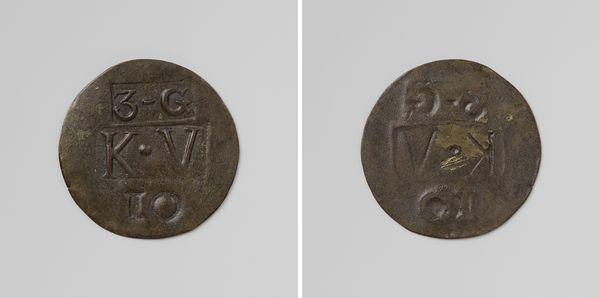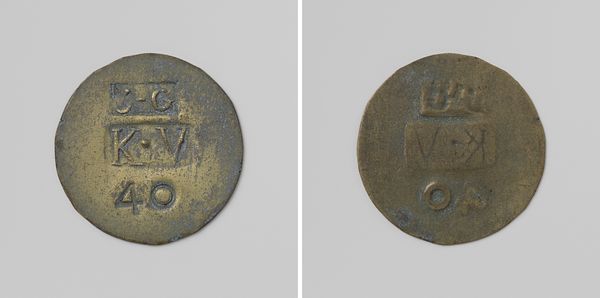
Tweede gesticht van de kolonie Veenhuizen, huismunt geslagen op last van de Maatschappij van Weldadigheid ter waarde van twintig cent 1818 - 1859
0:00
0:00
anonymous
Rijksmuseum
metal, sculpture
#
dutch-golden-age
#
metal
#
sculpture
#
sculpture
Dimensions: diameter 2.9 cm, weight 2.52 gr
Copyright: Rijks Museum: Open Domain
Curator: At first glance, this little metal disc—what is it? A button, a token, a misplaced coat check thingy? Editor: Well, it's much more loaded than that. This piece, made sometime between 1818 and 1859, is actually a form of currency. It was minted for use within the Veenhuizen colony, specifically, the Second Asylum established there. The institution itself was part of the Dutch Society of Benevolence, a project of social reform. Curator: Oh, benevolence cast in metal. So this coin tells a tale of—attempted—good intentions, I see, it doesn’t quite glow with generosity. It’s strangely… practical? The raised lettering is straightforward; there’s a bluntness about it, that rough texture tells a lot about function over flair. Editor: Exactly. These coins bypassed conventional economic systems. Imagine living in an entire community that functions on this type of parallel economy, entirely divorced from outside transactions. They were used in these communities dedicated to the poor, orphans, and vagrants, aimed at instilling order through labour. Curator: Sounds a bit like an… enclosed loop, where redemption comes pre-packaged. Was it effective, I wonder? I am so taken with that awkward ‘20’ at the bottom, denoting value, like the bare minimum someone decided was "enough." I bet the clink of those coins was constant within that contained world, eh? Editor: Well, history isn't simple. The goal was rehabilitation through a structured life and forced agricultural work. This coin becomes an uncomfortable symbol – a means of control disguised as assistance. How we frame it now is key. Curator: Right, not some heroic hand reaching down, but a closed fist handing out just enough to keep everything self-contained. I won’t look at pocket change the same way again! It holds entire forgotten communities, you think? Editor: Indeed. And, thinking critically about such institutional mechanisms helps us question present systems of governance as well.
Comments
No comments
Be the first to comment and join the conversation on the ultimate creative platform.
